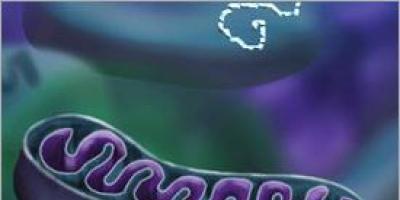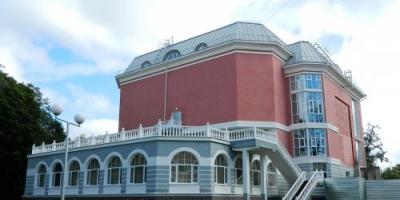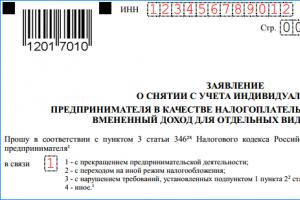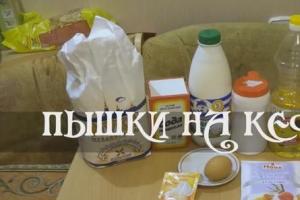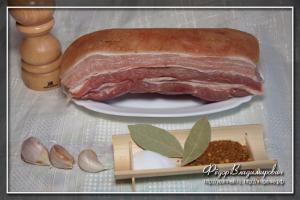Alexander Igorevich Asov is a writer, journalist, historian and philologist. Born in the village of Sokolskoye on the Volga, in the Nizhny Novgorod region, in a family of teachers. He graduated from school in the town of Gorokhovets, Vladimir region. He was the director of the local history museum. Then he graduated from Moscow State University and postgraduate studies, philosopher, ecologist and geochronologist, determined and clarified the dates of events ancient history associated with geological and environmental disasters.
For seven years he worked as a literary employee in the magazine “Science and Religion” (from 1991 to 1998), since 2004 again on the staff of the magazine, head. department of Slavic history.
Member of the Writers' Union of Russia, member of the Moscow Union of Journalists, corresponding member of the International Cyril and Methodius Academy of Slavic Education, academician of the Russian Orthodox Academy.
Books by Asov A.I.
Author's video
Rus' and the Vedas
A documentary film about the unity of Vedic culture and the Vedas, the origins of Slavic culture. Asov A.I., Khakimov A.G. (Chaitanya Chandra). Year 2008.
Swastika. Truth and lie
"Gods of the Slavs and the birth of Rus'." The swastika among the Slavs is “Solar” symbolism, or in other words “Solar” symbolism, which means the rotation of the solar circle. Also the word Swastika means “Heavenly Movement”, Sva - Heaven, Tik - Movement. Hence the names of the Slavic gods: the bird Mother Sva (the patroness of Rus'), the god Svarog and finally Svarga - the habitat of the light gods of Slavic myths. Swastika translated from Sanskrit (under one of the versions Sanskrit - Old Russian Slavic language) "Svasti" - Greeting, wish of good luck. The Slavs have 144 swastikas.
Secrets of the Slavic Civilization. Book of Gods
The Book of Veles is a collection of magical texts of the ancient Slavs.
Virgins of the Slavic gods
Half-forgotten origins of the Slavic spiritual tradition, legends about the shrines of the Russian land, about the gods and ancestors of the Slavs.
Birthday June 29, 1964
author of books on ancient Slavic history and culture, as well as novels, stories, stories, poetry
Biography
Born in the village of Sokolskoye on the Volga in a family of teachers. He graduated from school in Gorokhovets, Vladimir region. He was the director of the local history museum[where?].
Creation
Asov is the author of many “translations” of such fakes as the “Book of Veles”. It was thanks to his numerous publications in the 1990s that she became widely known as “Velesova” (and not “Vlesova”, as was originally in the publications of S. Lesnoy). By 2007, there were more than 10 different editions of A. I. Asov’s translation of “The Book of Veles”, including:
- Veles's book. - M.: Manager, 1994.- 318 p. (This edition contains the original text with discrepancies; according to the author, the volume of the book compared to the 1992 edition has been doubled based on new archival materials)
- Book of Veles. - M., Science and Religion, 1997. - 288 p. (New composition of chapters, original text not provided)
In Asov’s publications, the VK language is “improved” and somewhat closer to the Proto-Slavic and Early East Slavic realities (full consonance has been introduced - as in the name of the monument, some phonetic polonisms and late Ukrainianisms have been eliminated, yuses have been introduced instead of combinations like en, the alleged similarity of some features of the text with the language of birch bark letters is discussed ). Both some supporters of the authenticity of the Veles book (B. I. Yatsenko) and representatives of the prevailing point of view in science about the falsification of the work (O. V. Tvorogov, A. A. Alekseev) note the arbitrariness of Asov’s interpretations in his translations, unspecified changes in spelling and even the text of VK, incompetence in Slavic grammar. Thus, in the 1995 edition, “yus big” and “yus small”, incompetently introduced by Asov into the text, instead of the style, as it was in reality, differ only in size (in accordance with the names of the letters).
In many editions, the text of the “Veles Book” is supplemented by Asov with a number of other works, for example, the “Slavic-Russian Vedas” are “Songs of the Gamayun Bird” and “The Book of Kolyada” “reconstructed” by Asov and a number published by the forger A. I. Sulakadzev at the beginning of the 19th century centuries of pseudo-pagan texts, such as “Yarilina’s book”, “Boyanov’s funeral feast”. Contrary to the scientific opinion that has been established since the time of Sulakadzev, Asov considers them not fakes, but genuine works, and offers his own reading and breaking them down into words.
Based on his interpretation of the data of Sulakadzev and the “Veles Book” of Mirolyubov, Asov offers fantastic reconstructions of the biographies of a number of “historical” figures of pagan Rus' of the 3rd - 9th centuries unknown to traditional sources: the Magi and princes Bogumir, Bus Beloyar, Yagaila Gan (the creator, from his point of view , VK) and others, invents new Slavic gods - Kryshen, Vyshen, Chislobog.
In 1991 - 1993, then still Barashkov, under the pseudonym Bus Kresen, regularly published in the magazine “Science and Religion”, where he worked for some time as editor of the department of Slavic history, his articles also appeared in the magazines “Oracle”, “Continent”, “Knowledge” . A.I. Asov performed on radio and television.
Publications
- Asov A.I. Russian Vedas: Songs of the bird Gamayun, Veles's book. - M: Science and Religion, 1992. - 336 p.
- Asov A.I. Veles's book. - M: Manager, 1994. - 318 p.
- Asov A.I. Star Book of Carols. - M: Science and Religion, 1996. - 432 p.
- Asov A.I. Book of Veles. - M: Politekhnika, 2000. - 480 p. - ISBN 5732505458
- Asov A.I. Myths and legends of the ancient Slavs. - M: Science and Religion, 1998. - 319 p. - (Golden chain).
- Asov A.I. Atlanteans, Aryans, Slavs: History and Faith. - M: FAIR PRESS, 2008. - 555 p. - ISBN 5818312763
- Asov A.I. Gods of the Slavs and the birth of Rus'. - M: Veche, 2008. - 382 p. - (Vedoslavnaya Rus'). - ISBN 5953326009
- Asov A.I. Slavic runes and “Boyanov’s hymn”. - M: Veche, 2000. - 413 p. - (Great mysteries). - ISBN 5783805629
- Asov A.I. Slavic astrology: Star wisdom, astrologer, calendar, rituals. - M: FAIR PRESS, 2001. - 583 p. - ISBN 5818302377
- Asov A.I. Holy Russian Vedas. Book of Veles. - M: FAIR PRESS, 2001.
- Asov A.I. Holy Russian Vedas. Book of Kolyada. - M: FAIR PRESS, 2008. - 575 p. - ISBN 5818313018
- Asov A.I. Atlantis and Ancient Rus'. - M: Aif-Print, 2001. - 320 p. - (Who are we?). - ISBN 5932290889
- Asov A.I. Secrets of the "Book of Veles". - M: Aif-Print, 2001. - 557 p. - (Rus has many faces). - ISBN 5932290803
- Asov A.I. The world of Slavic gods. - M: Veche, 2003. - 526 p.
- Asov A.I. Sacred ancestral homelands of the Slavs. - M: Veche, 2003. - 496 p.
- Asov A.I. The Wizard from Asgrad. (Novel-story). - M: Veche, 2003. - 480 p.
- Asov A.I. Slavic Vedas. (Translation from Bulgarian-Pomak). - M: FAIR PRESS, 2003. - 700 p.
- Asov A.I. Ruskolan: Ancient Rus'. (History and traditions of the Russian Cossacks). - M: Veche, 2003. - 5000 copies.
- Asov A.I. Runes of the Slavs and the Boyan Hymn. - M: FAIR PRESS, 2005. - 446 p. - ISBN 5818309142
- Asov A.I. Songs of Gamayun / Excerpt from Bus Kresen. - M: FAIR PRESS, 2005. - (Vedas of Rus').
- Asov A.I. Songs of Alkonost / Excerpt from Zlatogor. - M: FAIR PRESS, 2006. - (Vedas of Rus').
- Asov A.I. Runes, signs and mysteries of the Slavs. - M: Veche, 2008. - 382 p. - (Vedoslavnaya Rus'). - ISBN 5953329792
- Asov A.I. Secrets of Russian Magi. - M: Veche, 2007. - 479 p. - (Secrets of the Russian land). - ISBN 5953324227
- Asov A.I. Calendar of Russian Magi. - M: Veche, 2008. - 398 p. - (Vedoslavnaya Rus'). - ISBN 5953328443
- Asov A.I. Stars of the ancient Slavs. - M: Veche, 2008. - 382 p. - (Vedoslavnaya Rus'). - ISBN 5953329202
Black Sea artifacts refute official history. Will the Slavic Crimea be studied on an equal basis with the ancient Greek? Veles's book - the subject of irreconcilable disputes among historians and linguists. Official science considers Veles’s book a falsification, alternative history – a great monument of Slavic writing and culture.
Alexander Asov- writer, journalist, historian and philologist - tells what new facts Veles’ book complements the classic picture of ancient history. Why does official science not want to recognize Veles’ book as a monument of ancient Slavic literature and denies the existence of statehood and writing among the Slavs before the 9th century? Did the Principality of Sourozh exist in Crimea and how does archeology confirm what was written in the Book of Veles? What artifacts are kept today in the museum at the Sudak fortress? Who were the mysterious Ruskolans and Tauris? Do researchers find a Slavic trace in Crimea? How long have the Slavs inhabited Crimea? Why are archaeological expeditions on the Black Sea coast engaged in excavations and research of ancient Greek history, but are silent about the Slavic history of Crimea? Why were they silent about the Russians in the Black Sea region during the Soviet era and are not talked about even now, after the annexation of Crimea to Russia? What do the Cossacks know about their ancestors from Ruskolani? Who benefits from the topic of forbidden archeology? Who uses science and culture in political games? Will the topic of Black Sea Rus', so relevant in the context of the modern political situation, be made public and studied?
Asov Alexander: The data about the Book of Veles is confirmed by our archaeological science, if we approach this matter with an open mind. What does the book of Veles say, what picture does it give, and what does it give that is new in relation to the classical picture of our ancient history that we had before its publication, the Book of Veles, what does it give that is new, and how can Veles’ book be confirmed archaeologically. Let's just say that Veles's book is a monument of the 9th century. And from the point of view of our science, our statehood itself was formed in the 9th century, and our ancient history before the 9th century, what it had to do with the Slavs, scientists argue, well, what to do? In science, as they say, there are no indisputable truths, but only political tendencies. However, Veles' book, one of its main themes, consists of sermons that were read in the temples of ancient Surozh. These are sermons, which compiled the Veles book from the ancient chronicles of the Ruskolan state, and cited modern history, and compared it with the history of our ancestors and ancestors. For our historical and archaeological science, the very concept of the Principality of Sourozh, a Slavic principality, a principality in the Crimea, because Surozh is the ancient Sudak. Because, firstly, there were Slavs there, and secondly, there was a Slavic principality where the sorcerer who published Veles’ book preached, all this contradicts the overwhelming majority of our learned historians and archaeologists.
However, when I myself, too, for me it was once news, it was quite a long time ago, 10-15 years ago, the Principality of Sourozh, Crimea. I just went to the Crimea, to this very Surozh, Sudak, and came to the keeper of the fortress, the Sudak fortress, a great archaeologist, the author of many scientific works Gorshkov, who was involved in archaeological excavations of the Surzh fortress, is probably 40 years old. He has some work on this. You can’t imagine how happy he was when I started telling him about Veles’ book, about the fact that there was a Principality of Sourozh here. He began to take me around all these excavations, he began to show me all these artifacts that belong to the Slavic, from ceramics to chronicles. He had a huge great job, confirmed by his expedition, he was not allowed to publish this work back in Soviet times. I published this whole matter, described it in popular science works, you can look at my books on this subject and links to this very Gorshkov. Recently I was there too, when Crimea annexed Russia, I went there too, he was no longer alive. However, he left a small museum, specifically where it is shown that one of the topics of this museum is not yet closed. Since this was still Ukraine, and the theme of the Veles Book is still there, it is included in higher school and secondary education, and there the theme of the fact that there was Taurus, and the Tauri are, perhaps, the ancient Slavs, it is simply present in the exhibitions of this very museum. You can look, not in the fortress itself, there is an amateurish, so to speak, museum under the fortress, they paid attention to this matter. The most beautiful references to the synaxarium, which says that next to the fortress there was an ancient Taurus settlement, and there is this fortress, and so on, and so on, and so on. And it was founded by these Alans, Ruskolans, Ruskolans are the Rus, who else are they? That is, these are controversial issues in our archaeological science, controversial issues in quotes; behind this lies very serious archeology.
If it weren’t for the opinions of our heads of those archaeological schools that were there, even in the same Crimea during the same Soviet times. Somehow it happened that it was necessary to bring up ancient Greek history, let’s say, or something else like that. There was a topic of its own, and attention was paid to it. And the fact that there were real scientists there who worked, dug and spent their lives researching the Slavic history of Crimea is still neither heard nor breathed about. Why, why, I don’t know, and what the political benefit of our current government is in this, I also don’t understand at all. But let's understand, there are works, there are works, there is archeology. This is one of the questions that is probably the most pressing now in connection with the annexation of Crimea to Russia. The themes of Ruskolani herself are the same. The theme of Ruskolani in the North Caucasus, the ancient Pyatigorsk principality, is confirmed by archaeology. The Cossacks, who lived there from time immemorial, know very well that their ancestors have always lived here, and archaeological science has been behind this since the 19th century. There, the theme of Black Sea Rus', which existed since the time of the first historians of Ilovaisky, was only trampled on by Novoseltsev in the fifties, and was trampled on in the sixties. Then there were still her followers, but it was difficult for them to express their opinions. However, behind this lies the most beautiful archeology, the most beautiful of our greatest scientists, works, and so on, so on, and so on. That is, this topic, let’s say, is for some reason forbidden to archeology, for whom it benefits, in general, it is clearly unprofitable for our state and our politics, but it is beneficial for those who secretly sponsor and place their people in administrative positions. These are not scientists, these are politicians who use science against our cultural history. That's the only way I understand it.
Asov A.I. - about the author
For seven years he worked as a literary employee in the magazine “Science and Religion” (from 1991 to 1998), since 2004 again on the staff of the magazine, head. department of Slavic history.
Member of the Writers' Union of Russia, member of the Moscow Union of Journalists, corresponding member of the International Cyril and Methodius Academy of Slavic Education, academician of the Russian Orthodox Academy.
Asov A.I. - books for free:
The book is a collection of ancient Slavic legends about the Creation of the World, about the gods and heroes of the Belogorsk and Berendey sacred traditions. The texts are collected from Slavic oral traditions and folk books. Many texts are common to most...
“Yarilin’s Book” is a Ruskolan chronicle that tells about the events of the history of Ruskolan, or Alanian Rus', at the end of the 3rd - beginning of the 4th century AD. Dedicated mainly to the Busov Times...
It was written by the sorcerer Moveslav. The manuscript of “Yarilina’s Book” is mentioned...
Russian Vedas. Songs of the Bird Gamayun. Collection of “The Book of Kolyada...”.
The book represents a collection of Russian legends about the Birth of the World, about the gods of the mountains: Svarog, Perun and Veles, as well as about the most revered spirits of the elements and patrons of Rus': Finist and Lele...,
The book presents a collection of Russian legends about the Birth of the World, about the gods of the mountains: Svarog, Perun and Veles, as well as about the most revered spirits of the elements and patrons of Rus': Finist and Lela, Kostroma and Kupala, Morozko and the Snow Maiden and others.
Velesov's (Vlesov's) book is a unique monument of ancient Slavic writing of the 9th century. AD It was carved on wooden tablets by Slavic magicians. The book covers the two-thousand-year history of Slavic-Aryan migrations from Semirechye...
]
(Moscow: Aletheya, 1999)
Scan, processing, Djv format: Pavel Potekhin, 2013
- TABLE OF CONTENTS:
INTRODUCTION (8).
History and historians (8).
A little background (11).
I. ATLANTIS AND ANCIENT Rus' (15).
IN SEARCH OF ATLANTIS (17).
Plato's Atlantis (17).
Atlantis in the Atlantic (22).
Atlantis and Crete (25).
Atlantis - in the West (29).
Atlantis - in the East (32).
Hyperborean Atlantis (35).
To Hyperborea following Odysseus (38).
To Atlantis following the trail of the Argonauts (57).
The death of Atlantis and Dardan's flood (63).
The Great Flood... in the Black Sea? (71).
The death of Atlantis and the myth of the Flood (75).
Atlantis and the country of the Hittites (76).
RUSSIAN ATLANTIS (81).
Rus' is the land of titans and Atlanteans (81).
To Atlantis in the boat of Ivan Tsarevich (85).
Rus'-Aryans and Atlanteans (87).
Where are you, Altyn land? (94).
Atlanteans, Aryans and Amazons - Proto-Slavs (96).
The Rus are the heirs of the Atlanteans (99).
On a yacht - to Atlantis! (103).
II. ANCIENT HISTORY OF THE SLAVS (113).
UNTIL THE ARIA OF THE FALL (115).
A little background (115).
Wars of the Amazons with the Atlantean Hutts. Queen Mirina (III-II millennium BC) (117).
FROM ARIA OSEDNIA TO BUS (118).
Prehistory of the Proto-Slavs-Aryans (early 2nd millennium BC - 6th century BC) (118).
Reign of Madiya and Zarina (VII century BC) (121).
Reign of Arianta (beginning of the 6th century BC) (126).
Reigns of Tamiris and Idanfirs. Wars with Cyrus and Darius (VI century BC) (129).
Wars with Pericles and Alexander the Great (V-IV centuries BC) (133).
Great Sarmatia (III-II centuries BC). Boards of Saitafarna, Amagi, Gatala (137).
Vendia and Rus' Bodrich (III-I centuries BC). Wars with Berig and Julius Caesar (139).
Scythia, Sarmatia and Bosporus (1st century BC). Mithridatic Wars. Earthquake 63 BC Reigns of Tasias and Asandra (142).
Ruskolan and Ostrogothia (I-III centuries AD). Reigns of Zorin, Kiy of Assk and Kiy of Goth (147).
FROM BUS TO RURIK (156).
Rus' of the 4th century: Slovenia, Borussia, Golun, Voronezh, Volyn, Lebedia, Surenzhan, Vendia. Principalities of Busa, Slovenia, Bolorev (156).
Skuf of Kiev, Antia and Slavia (5th century). Migration of peoples. Attila. The reigns of Kiy, Lebedyan, Veren and Serezhen (159).
Rus' and Europe of the 6th century. Settlement of the Balkans. Avar yoke. The reigns of Sventojar, Mezenmir, Dobrita (167).
The end of the Avar yoke. Slavs and Rus of the beginning of the 7th century. Principalities of Samo and Dervan (180).
Khazaria and Rus' of the 7th and 8th centuries. The campaign of Prince Bravlin (183).
Rus', Khazars and Varangians (IX-X centuries). The reigns of Burivoy and Gostomysl, as well as Olom, Dir, Askold and Rurik (190).
Baptism of Slavic peoples (202).
Application
THE LEGACY OF ANCESTORS. Articles different years (205).
The path to magical Rus' (207).
MOSCOW VEDIC (209).
Moscow was founded 1400 years ago! (209).
Sanctuary of Veles... in the Kremlin (220).
Nightingale the Robber... in ancient Moscow? (225).
Magic boulders of Bolvanovka (229).
Coat of arms of Moscow... in Ancient Egypt? (232).
Moscow - Third Arkaim (233).
GUARDIANS OF THE FAITH (241).
Vedic temples of the Slavs (241).
Kitezh tradition of the Volga region (250).
Berendeys are warriors and keepers of the faith (255).
Where did the Belarusian asilki go? (263).
Servants of the Fierce God (267).
“Veda of the Slavs”: a journey of one and a half centuries (272).
Living tradition of Mari (275).
Magi... and revolution (286).
Keepers of the Star Book (291).
READING ON THE HISTORY OF THE SLAVS (302).
Publisher's abstract: The book provides sketches of the history and prehistory of the Slavs from the era of Atlantis to the present day, talks about the guardians of the ancient faith, the most important achievements of pagan and Vedic culture, written monuments, temples, statues of gods, etc. A separate chapter is devoted to the ancient history of Moscow.

